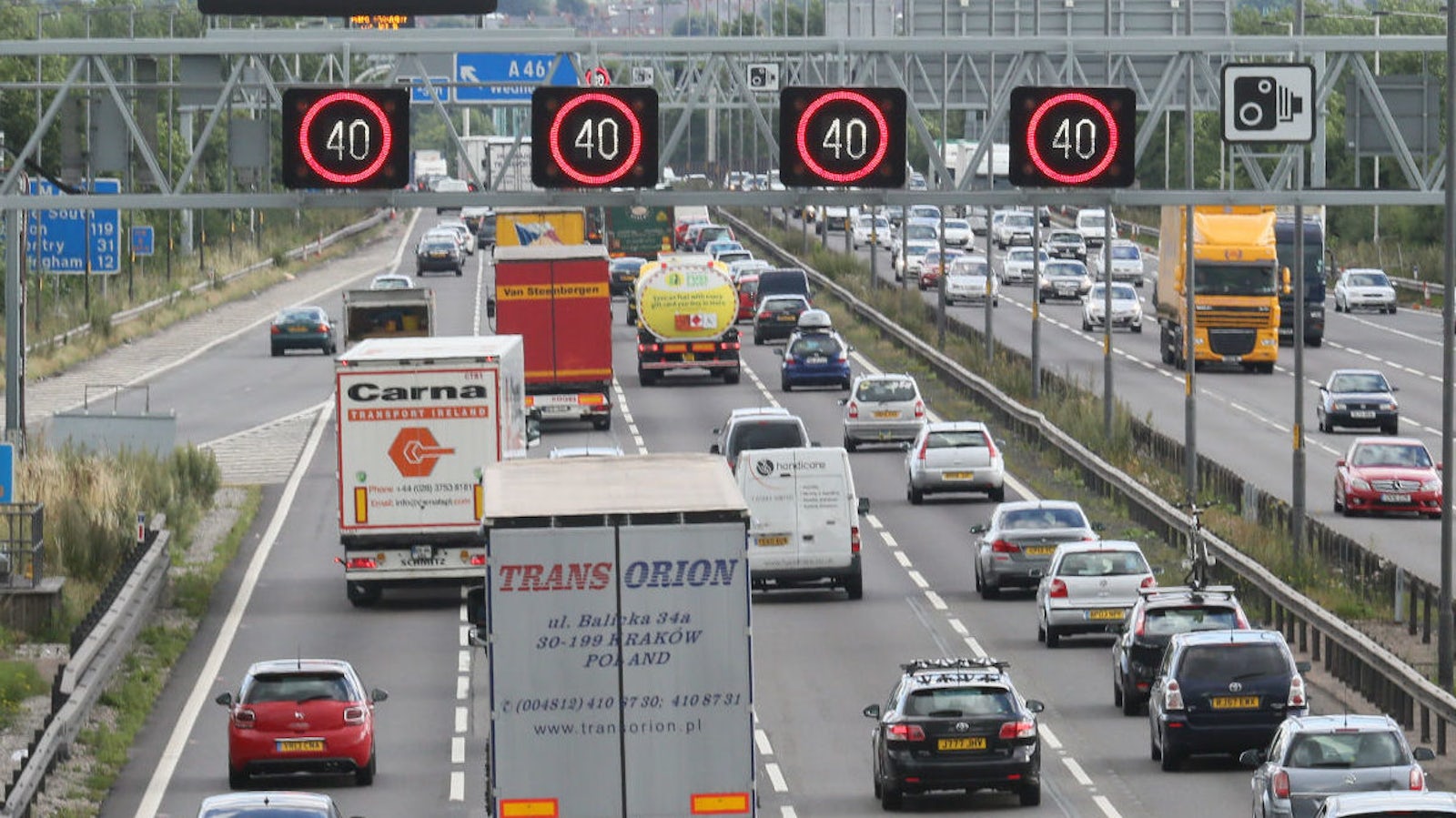Car changing is a big deal
There will be new roadworks on the M25, M3, M4, M20 and M27 until late summer as 52 extra emergency refuge areas are installed to address safety concerns about smart motorways.
- 52 new emergency refuge areas to be installed on smart motorways in the south east
- Roadworks and lane closures start on 25 April and continue until ‘late summer’
- M25: 24 new emergency refuge areas being installed in total
- M25: 15 new emergency refuge areas between J23 to J27, (Hertfordshire and Essex)
- M25: 9 new emergency refuge areas between J5 to J7, M25 (Surrey and Kent)
-
28 new emergency refuge areas on other smart motorways in the south east:
M3 (J2 to J4A), M4 (J10 to J12), M20 (J3 to J5), M27 (J4 to J11) - Motoring organisations want the hard shoulder back
New roadworks and lane closures about to start on the M25, M3, M4, M20 and M27 could cause extensive delays over the May bank holidays and until late summer while 52 new emergency refuge areas are installed in response to concerns about safety on smart motorways.
Works start on Thursday 25th April on the M25 to add 24 new emergency refuge areas, with 15 of them between J23 in Hertfordshire and J27 in Essex, and nine in Kent and Surrey between the M25/M26 intersection (J5) and the M25/M23 intersection (J7).

The other 28 emergency refuge areas will be installed on smart motorways in the south east. These include:
- M4: 12 new emergency areas in Berkshire between J10 and J12
- M3: 10 new emergency areas in Surrey and Hampshire between J2 and 4A
- M20: 4 new emergency areas in Kent between J3 to J5
- M27: 2 new emergency areas in Hampshire between J4 and J11
While the roadworks are in place, the left-hand lane of the motorway will be closed, with a 50 mph speed limit in place for the three lanes remaining open.

Smart motorways were introduced to try to reduce traffic congestion by turning the hard shoulder into an extra carriageway, and instead have emergency refuge areas at regular intervals for drivers to stop in if they break down or need assistance.
However, smart motorways have been criticised on safety grounds over concerns that emergency refuge areas are too far apart, leaving vehicles stranded in live traffic lanes, sometimes resulting in serious and fatal accidents.
As a result, in April 2023, the government announced that all plans for new smart motorways without hard shoulders would be cancelled and that existing smart motorways would benefit from £900 million of safety improvements.
Felicity Clayton, National Highways Project Sponsor commented: “We have listened to drivers’ concerns about having more places to stop in an emergency on motorways which don’t have a permanent hard shoulder. This is part of the Government’s £900 million investment in further safety improvements on existing smart motorways, which includes adding an additional 150 emergency areas across the network and giving motorists clear advice when using smart motorways to boost public confidence.”

Jack Cousens, head of roads policy for The AA, said: “These new emergency areas are welcome and will provide drivers reassurance that they are not too far away from a place of relative safety. However, all this disruption could have been avoided had these been installed during the initial roadworks. Furthermore, drivers would much rather the return of a permanent hard shoulder. While new schemes of so called ‘smart’ motorways have been shelved, drivers would like the same fate handed to the existing network.”
RAC head of policy Simon Williams commented: “While heralded as a cost-effective way of increasing capacity on some of our busier roads, a colossal amount of public money has since gone into trying to make these smart motorways safer – for instance by installing radar-based technology to detect stricken vehicles more quickly, plus the creation of additional emergency refuge areas. This cash needn’t have been spent had the Government not taken the decision to plough on with building all-lane running motorways, regardless of concerns expressed by drivers, the RAC and even the Transport Committee. However, the ultimate question remains: will the motoring public ever be entirely comfortable driving on the 200-plus miles of motorway where the hard shoulder has been permanently removed? The hard shoulder is by no means a safe location, but in the event of a breakdown, it is far safer than being stranded in a live lane of traffic waiting for the ‘red X closed lane’ sign to be turned on and then for other drivers to do the right thing and move into another lane.
“We continue to believe that the Government should either convert existing all-lane-running smart motorways to ‘dynamic’ ones, where the hard shoulder is only opened to traffic during busy periods, or repaint the white line and reintroduce a permanent hard shoulder on these roads. In either case, queue-busting technology, such as variable speed limits, could remain to help ensure traffic flows as smoothly as possible,” he added.
Thinking of selling your car? If so, then Carwow is the place to go to sell your car. All through our network of trusted dealers and all from the comfort of your home. Tap the button below to get started today.
